Trinidad Pastelle Recipe
Trini pastelles are savory cornmeal pies filled with seasoned meat, wrapped in banana leaves, and steamed to perfection. A cornerstone of Trinidad and Tobago’s Christmas traditions, these delicacies are a must-have during the festive season.
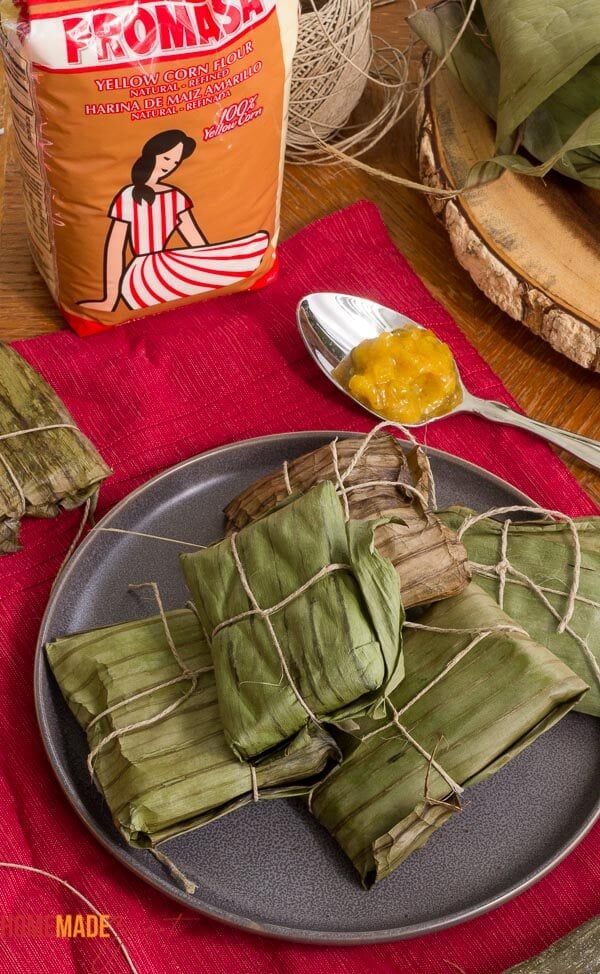
If you’ve never tried one, imagine a perfectly seasoned meat filling encased in a delicate cornmeal dough, with hints of olives, capers, and raisins for a burst of flavor. This iconic Caribbean dish pairs beautifully with chow chow and other holiday favorites like black cake, ginger beer, and sweet bread.
Although making pastelles can feel daunting due to the multi-step process, this guide breaks it down into manageable sections to help you recreate this classic dish. Whether you’re a seasoned cook or a beginner, you’ll have all the tips you need to make delicious pastelles at home.
What are Trini pastelles
Pastelles are soft cornmeal pies traditionally filled with seasoned ground beef, chicken, fish, or vegetarian alternatives. The dough is wrapped in banana leaves and then steamed until tender.
While some compare them to tamales or empanadas, pastelles are uniquely Caribbean. They’re said to have evolved from the Venezuelan hallaca, brought to Trinidad by Spanish settlers. Over generations, local flavors like chadon beni, pimento, capers, and raisins made this dish uniquely Trinidadian.
Why pastelles are a Christmas favorite
Pastelles are more than just food, they’re part of the fabric of a Trinidadian Christmas. From the scent of seasoned meat to the ritual of wrapping them in banana leaves, these little parcels represent tradition, family, and the holidays.
Making pastelles is often a group effort. Once you commit to the process, you’re likely making dozens at a time, which means calling in help to form a full-on pastelle assembly line. And for good reason six pastelles won’t last long!
They’re enjoyed at family gatherings, gifted to neighbors, and served alongside festive dishes like baked ham and stuffing. Pastelles bring people together, which is what Caribbean Christmas is all about.
How to make Trini pastelles
Ingredients
For the dough:
- Corn flour – Promasa is the base of the pastelle dough. It creates a soft, smooth texture that holds its shape when folded and steamed.
- Oil – Adds moisture to the dough, making it easier to work with.
- Salt and sugar – Help balance the flavor of the dough without overpowering the filling.
- Warm water – Gradually added to bring the ingredients together into a pliable, non-crumbly dough.
Cornmeal can be used if necessary, but it creates a coarser dough with a slightly grainier bite.
For the filling:
- Ground meat – Typically beef, but chicken, fish, or even vegetarian alternatives like mushrooms or lentils work just as well.
- Aromatics – Onion, garlic, chive, pimento, celery, and chadon beni build the savory base flavor.
- Briny and sweet add-ins – Capers, olives, and raisins add a signature burst of tang, salt, and a hint of sweetness to the mix.
- Salt and black pepper – Season to taste for a well-balanced filling.
Everything should be finely chopped to avoid poking through the thin dough.
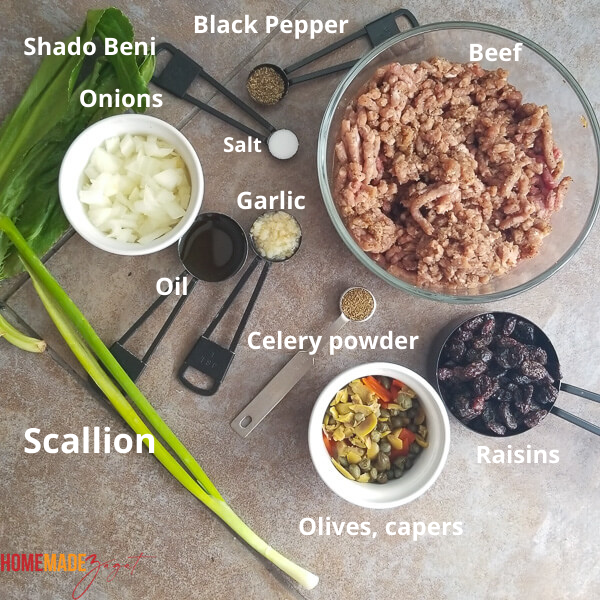
Equipment needed
- Banana leaves (or foil/parchment)
- Food-safe twine for tying
- A press or plate to flatten dough
- Large pot with a colander or steamer basket for cooking.
Instructions
Step 1: Prepare the Banana Leaves
Clean banana leaves and trim away the thick center rib and edges. To make them pliable:
- Pass them over low flame until they soften, OR
- Dip briefly in boiling water, OR
- Place in a 200°F oven for 5–10 minutes.
If using frozen store-bought leaves, defrost, wipe with a damp cloth, and clean with diluted vinegar water.
Step 2: Cook the Filling
- Heat oil in a pan and sauté onion, garlic, and chive until soft.
- Add ground meat and cook until browned.
- Stir in seasonings: pimento, celery, chadon beni, black pepper, and salt.
- Once meat is cooked through, remove from heat and mix in olives, raisins, and capers.
- Set aside to cool.
Step 3: Make the Dough
- In a bowl, mix corn flour, salt, sugar, and oil.
- Gradually add warm water and knead into a soft, pliable dough.
- Roll into balls—lime-sized or tennis ball-sized depending on your preferred size.
- Cover with a damp cloth to keep them from drying out.
How to fold and wrap pastelles
- Lightly grease one side of a banana leaf with oil.
- Place a ball of dough in the center and flatten into a thin circle using your hands, a plate, or a press.
- Add a spoonful of filling to the center.
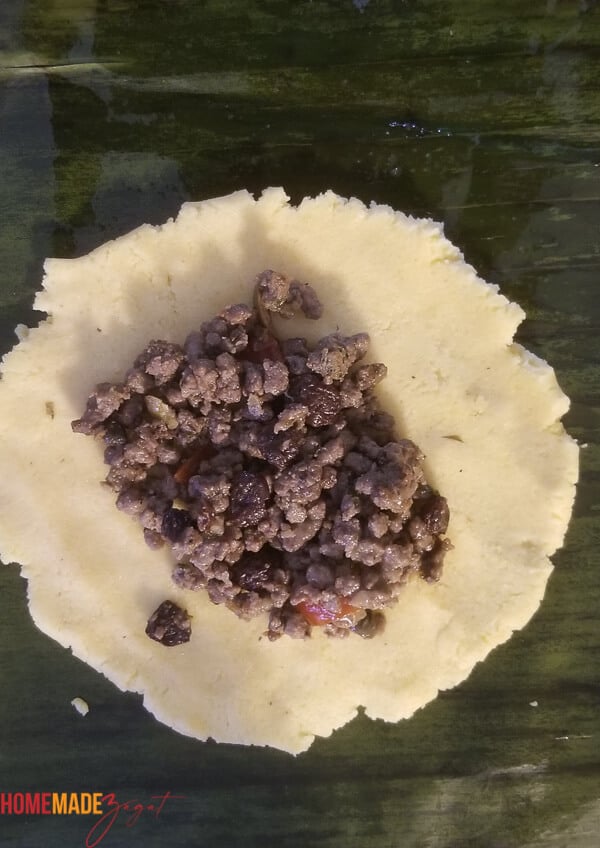
- Fold one side of the leaf over and peel it back to leave the folded dough in place.
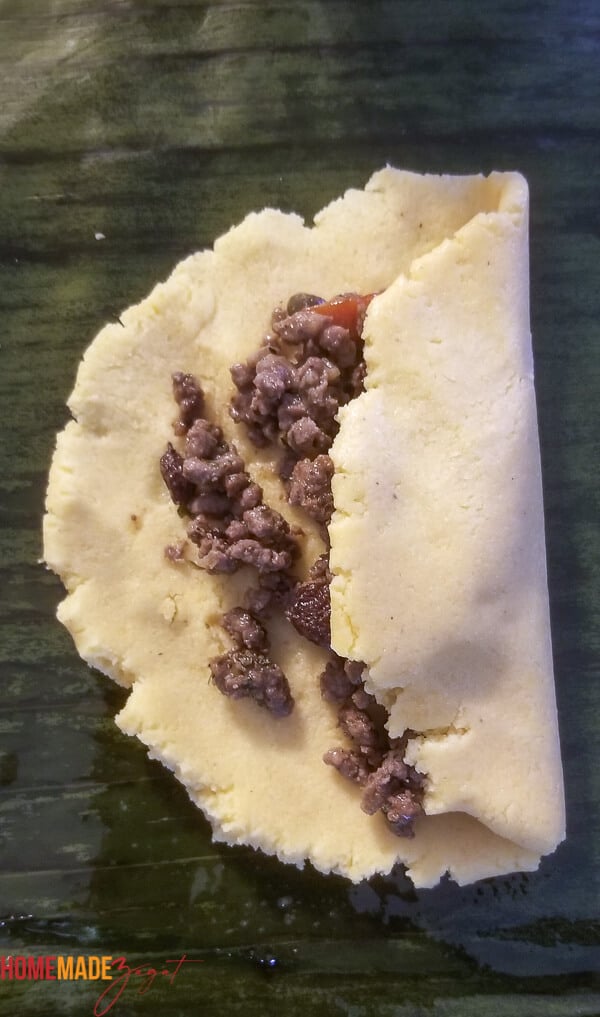
- Repeat with the opposite side, then the top and bottom to fully seal the filling inside.
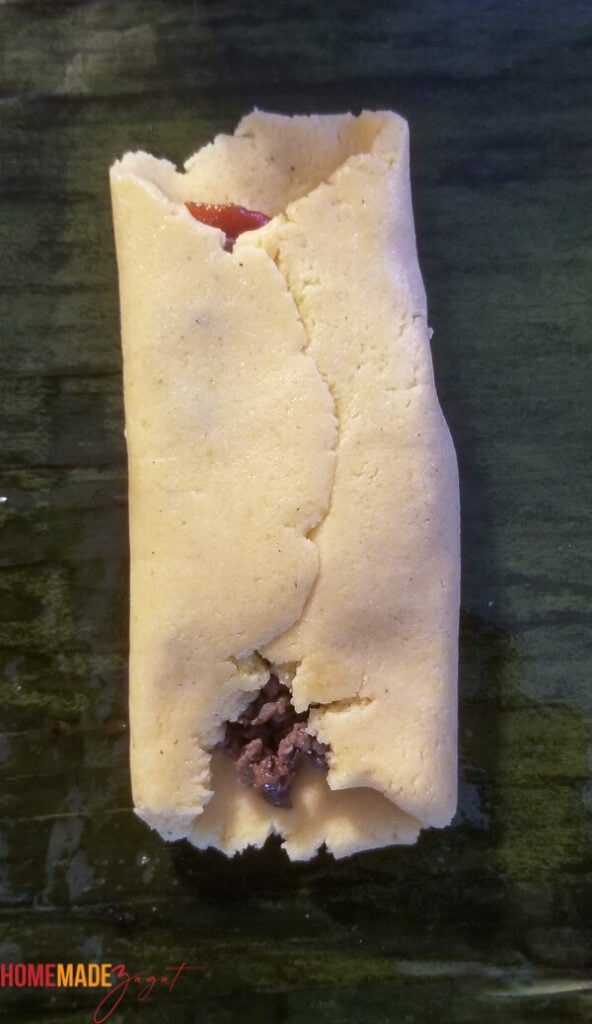
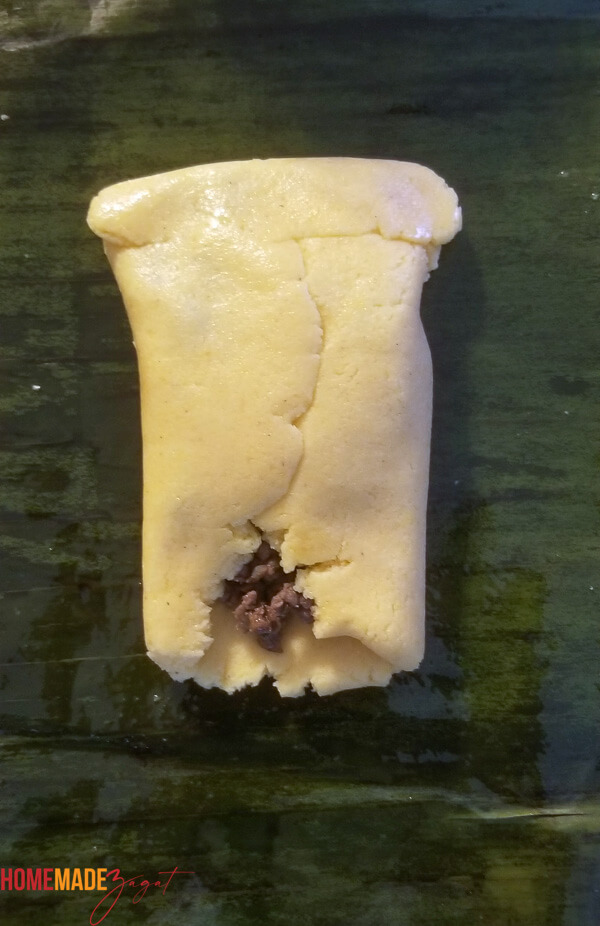
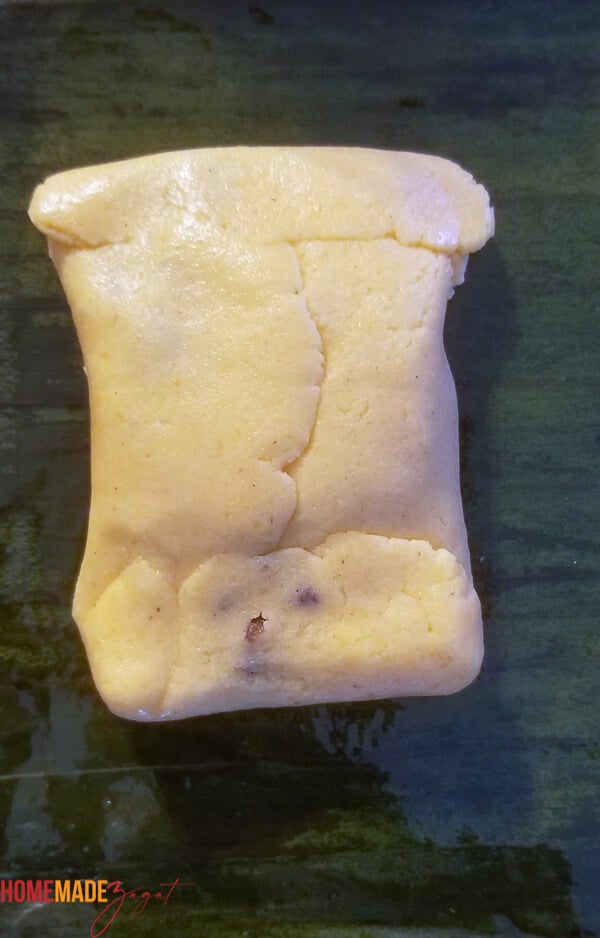
- Wrap the banana leaf securely around the dough.
- Tie with twine to hold it closed.
Repeat the process until all your dough and filling are used.
Optional: Use foil instead of banana leaves or wrap in both (leaf inside, foil outside) for extra security.
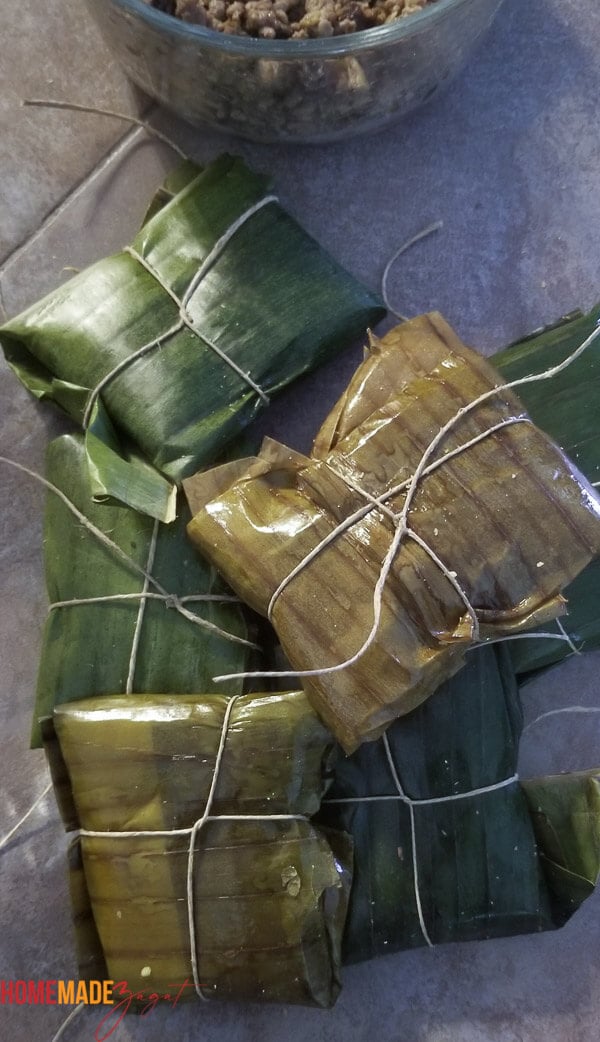
How to cook and store Trini pastelles
Boiling Method:
- Bring a large pot of salted water to a boil.
- Add the pastelles and boil for 25–30 minutes.
- Remove with a slotted spoon and let drain.
Steaming Method:
- Place pastelles in a colander or steamer basket over boiling water (without touching the water).
- Cover and steam for 25–30 minutes.
- Remove and let cool slightly before serving.
Storage
Refrigerator:
- Cooked pastelles can be stored in the fridge for up to 3–5 days.
Freezer:
- Store cooked or uncooked pastelles in freezer-safe bags or containers for up to 1 year.
- Label and date your packages for easy rotation.
Reheating:
- Reheat frozen pastelles by boiling or steaming them directly from frozen for 10–15 minutes.
- Microwave in a pinch, but note the edges may get crunchy.
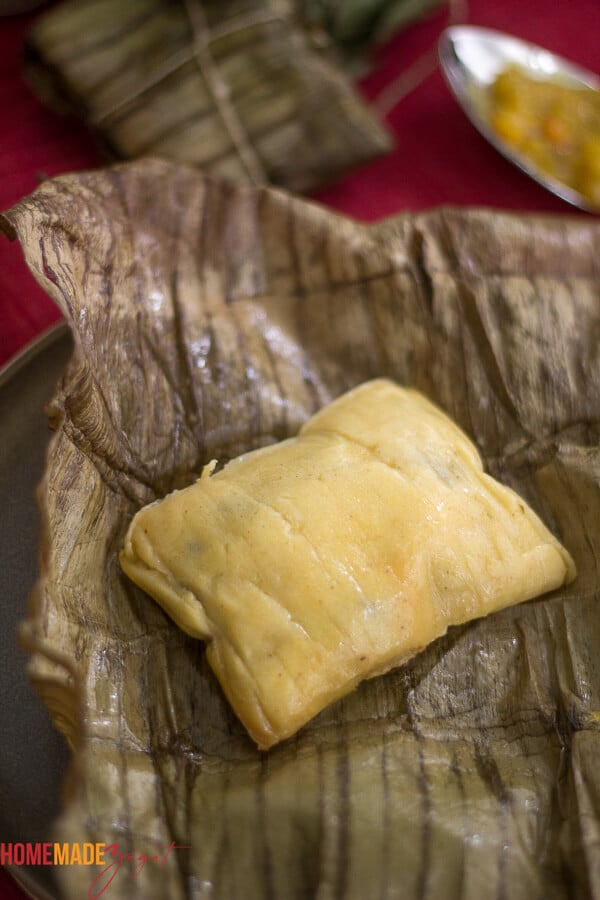
What to eat with pastelles
Pastelles are commonly topped with chow chow, a tangy relish that cuts through the richness of the meat and dough.
You can serve them on their own as appetizers or pair them with your full Christmas plate: baked ham, macaroni pie, stuffing, callaloo, and more. They’re versatile and festive enough to show up at any meal during the season.
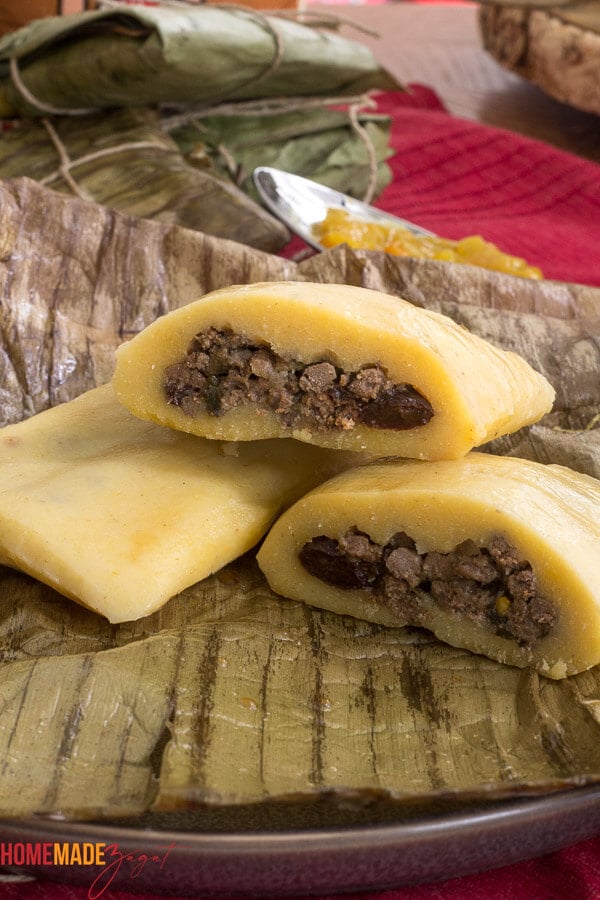
Frequently Asked Questions
Yes! You can freeze them cooked or uncooked for up to a year.
Boil or steam them from frozen. Microwave only if needed, and wrap in a damp towel to prevent drying.
Use foil, parchment paper, or a combination of both. Banana leaves add flavor, but they’re not mandatory.
Definitely! Use seasoned mushrooms, lentils, or even chickpeas for a tasty plant-based version.
Up to 5 – 7 days when kept in an airtight container.
Final Thoughts
Making Trini pastelles is a labor of love, but it’s one that connects us to our culture, our families, and our favorite Christmas memories. Whether you’re making six or sixty, every pastelle wrapped is a little piece of home.
Tried this recipe? Let me know in the comments what filling you used or who helped you wrap them up this year.
Recipe

Trinidad Pastelle Recipe
Ingredients
Method
- In a large bowl, mix cornmeal, oil, sugar, and salt.
- Gradually add warm water in batches until a sticky dough forms.
- Divide dough into 12 equal balls (or more if making smaller pastelles).
- Heat oil in a skillet.
- Sauté onion and garlic until fragrant.
- Add ground beef and cook through.
- Season with salt, black pepper, and pimento.
- Stir in chive, celery, and chadon beni. Cook until meat is tender.
- Remove from heat. Mix in raisins, capers, and olives. Set aside.
- Lightly oil one side of a banana leaf square.
- Place a ball of dough on the oiled side and flatten to about 1/8–1/4 inch thick using oiled fingers, a bottle, or a plate.
- Spoon about 2 tablespoons of filling into the center.
- Fold the left side of the leaf to cover the filling. Pull the leaf back.
- Fold the right side of the leaf to cover the filling. Pull the leaf back.
- Now fold in the short ends the same way.
- Now wrap up the leaf fully and secure with twine.
- Repeat for all dough balls.
- Add pastelles to a large pot of boiling salted water. Boil for 25–30 minutes.
- Alternative: Steam in a colander set over boiling water for 30 minutes (do not submerge).
Nutrition
Notes
- You can use other meats (chicken, pork, turkey) or try a vegetarian version with mushrooms.
- For a smoother filling, pulse the cooked meat in a food processor before stuffing.
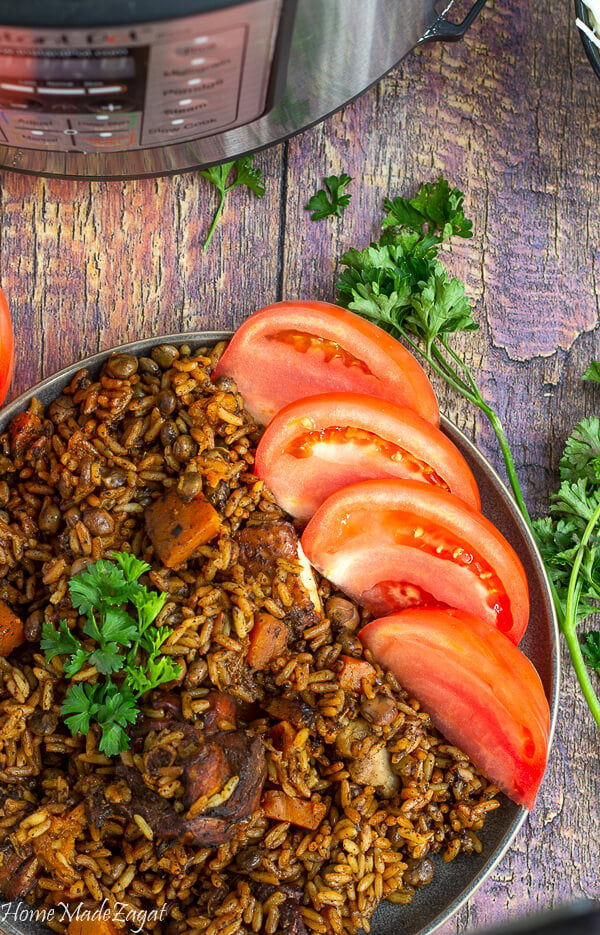
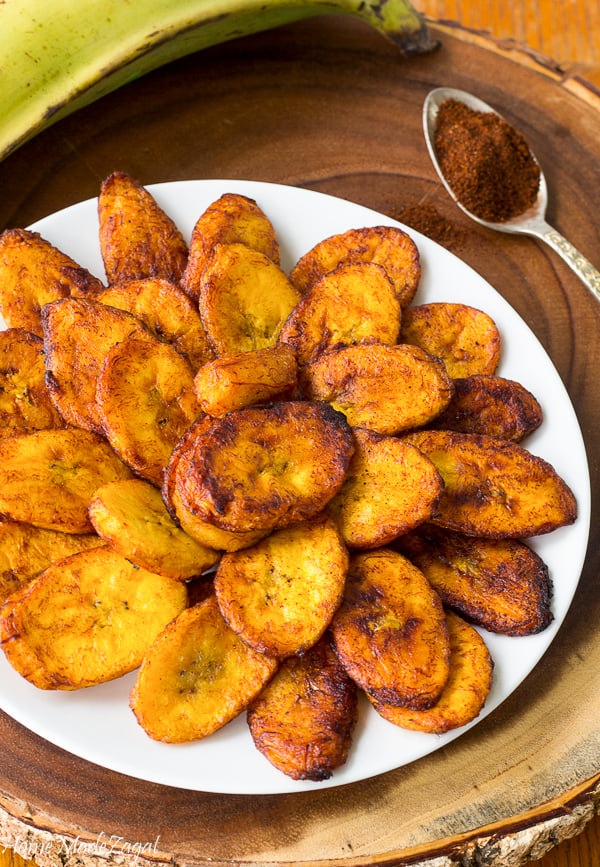
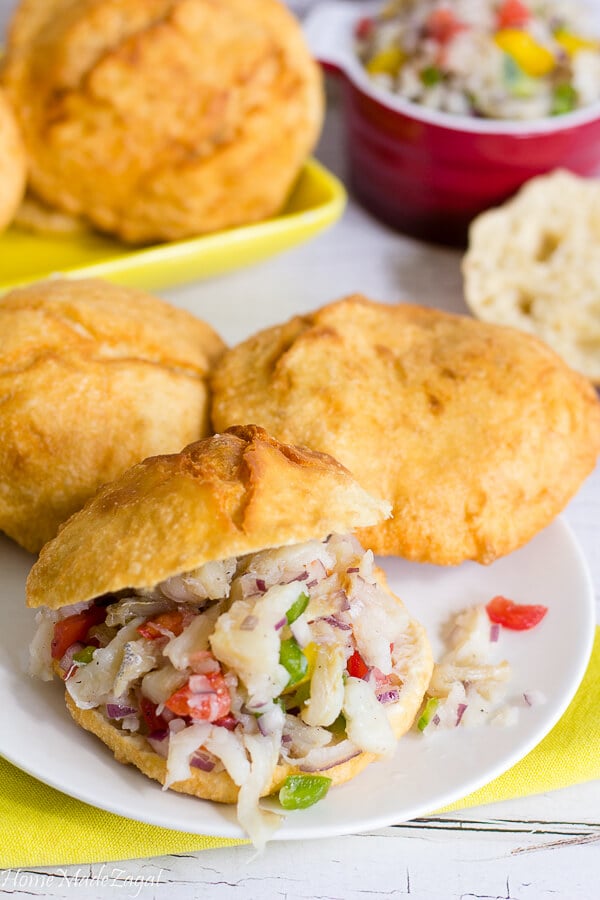
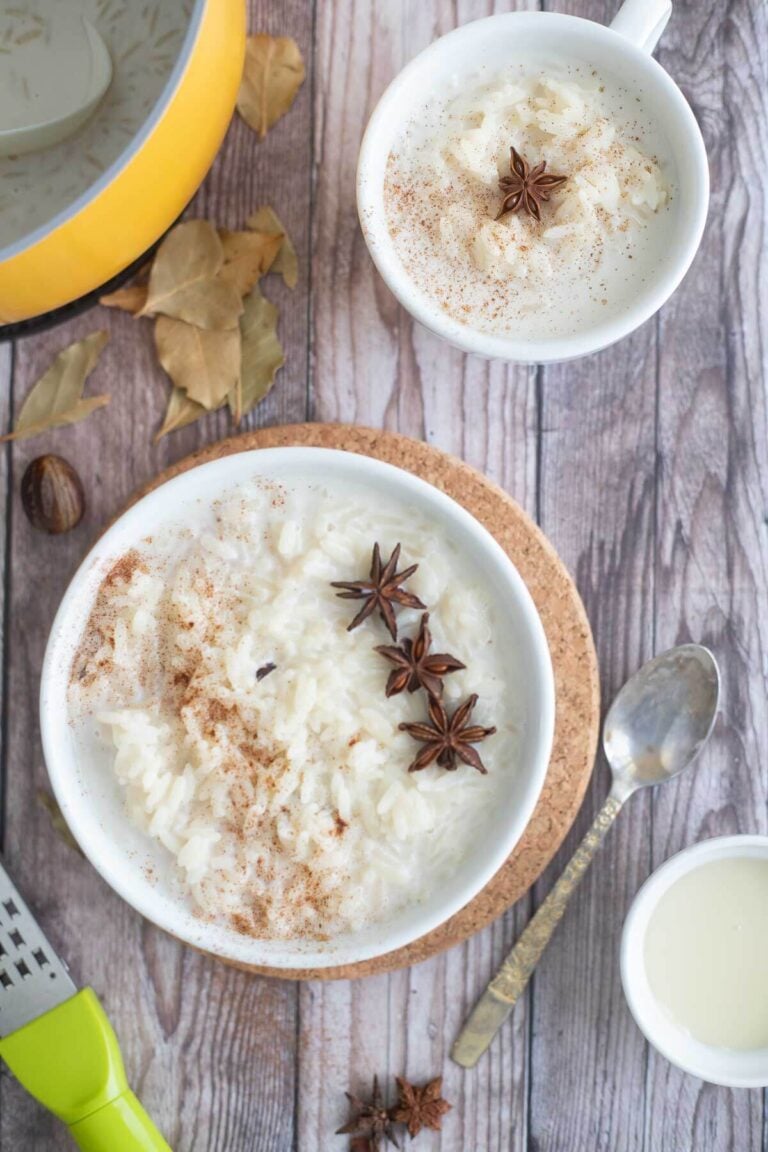

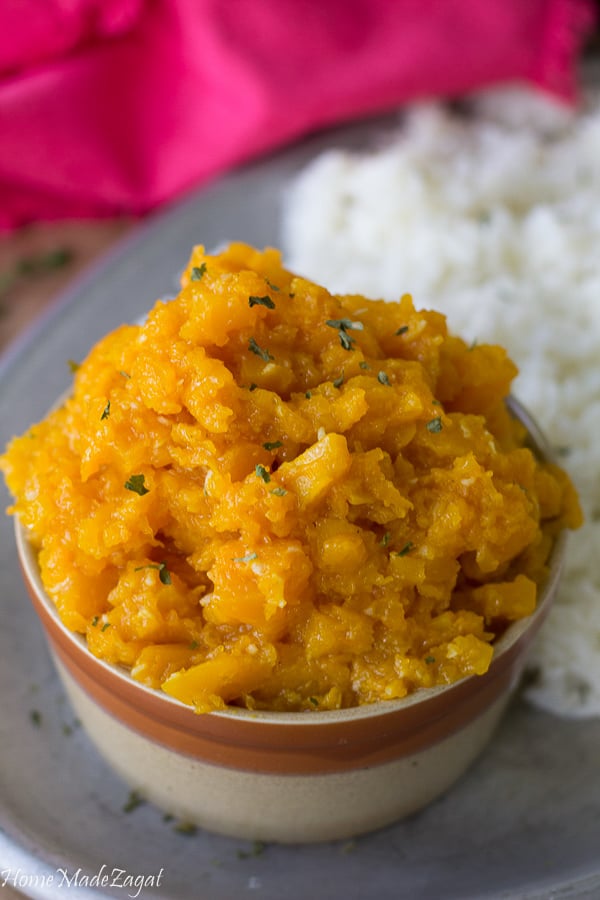
Best recipe – simple, straightforward and explains procedure very well.
Thank you so much!!
This worked out great for me. Really thanks for breaking it down into sections. Made it very easy.
5 full stars from me! I’ve used this recipe time and again with stellar results. This is my go to for trini pastelles! Love it.
Yess. Thanks!!